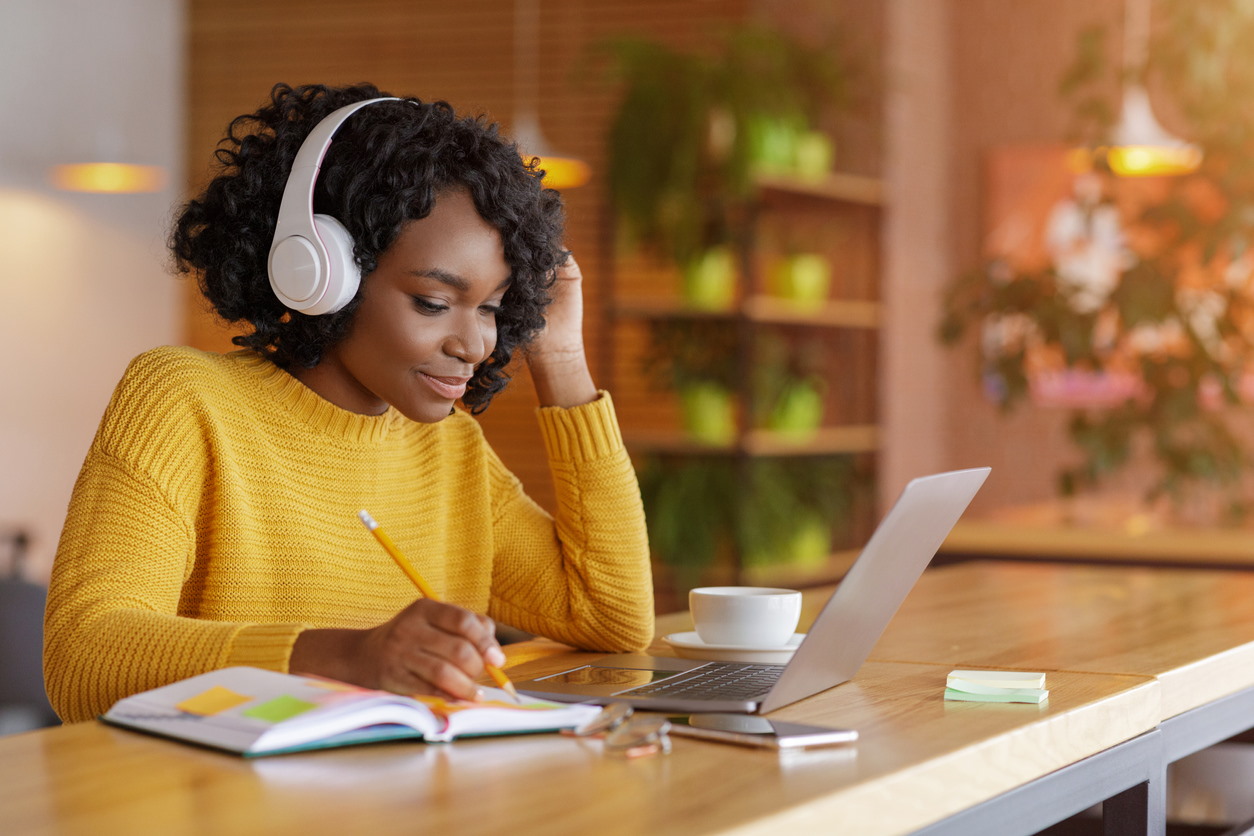Hosting your first webinar can be both exciting and nerve-wracking. Webinars have become a cornerstone of virtual engagement, with 73% of B2B marketers citing webinars as one of the most effective ways to generate high-quality leads.
However, a successful webinar doesn’t happen by accident. It requires careful planning, the right tools, and a robust webinar checklist to ensure everything runs seamlessly.
Whether you’re reaching out to clients, training staff, or launching a new product, this essential checklist for hosting a webinar will help you tick off everything you need for success.
Table of contents- Define your webinar goals and audience
- Choose the right webinar platform
- Prepare your webinar equipment
- Create a webinar launch checklist
- Engage your audience during the webinar
- Follow up after the webinar
- Conclusion
Define your webinar goals and audience
Before diving into the technical aspects, you must establish a clear direction for the webinar. Defining your goals and identifying your audience will not only help structure your content but also ensure that your efforts align with your business objectives.
Clarify your goals
Ask yourself the following questions:
-
What is the primary purpose of this webinar? Are you looking to generate leads, boost brand awareness, train team members, or educate your audience?
-
What metrics will you use to measure success? (e.g., number of attendees, lead conversions, engagement levels)
A well-defined goal will allow you to set realistic expectations and focus on delivering meaningful content that provides value.
Know your target audience
Understanding your audience is just as crucial as setting goals. Take the time to answer these questions:
-
Who are you speaking to? Are they clients, prospects, colleagues, or industry experts?
-
What are their pain points, and how will your webinar address these challenges?
-
What type of content will resonate with them most? (e.g., data-driven presentations, live demonstrations, interactive Q&A)
Tailor content to your audience
Once you’ve identified your audience, ensure your webinar’s tone, structure, and content are tailored to their needs. For example:
-
For technical audiences, focus on in-depth explanations and case studies.
-
For business decision-makers, highlight ROI, benefits, and practical applications.
-
For general audiences, keep the content clear, concise, and engaging.
By defining your goals and audience upfront, you create a solid foundation for every other element of your webinar—from promotion to delivery.
Choose the right webinar platform
Your platform will make or break the experience for your attendees. It’s not just about delivering a webinar—it’s about creating an engaging, seamless, and professional experience. When evaluating webinar platforms, ensure they offer:
-
HD video and audio quality: Crisp video and clear sound are essential for keeping your audience engaged and reducing drop-offs.
-
Screen sharing and presentation capabilities: Easily showcase slides, videos, and documents without glitches.
-
Interactive features: Tools like Q&A sessions, live chat, polls, and hand-raising encourage audience participation and real-time engagement.
-
Recording capabilities: Record the session to make it accessible for those unable to attend live or as evergreen content for future use.
Seamless integration with your ecosystem
Look for a platform that integrates seamlessly with your existing tech stack, such as your website, CRM, or app. Digital Samba Embedded, for instance, stands out for its ability to embed directly into websites and applications while offering a robust video conferencing API. This allows businesses to:
-
Customise the webinar experience to align with their brand
-
Provide a secure, GDPR-compliant platform for video and audio conferencing
-
Maintain full control over user access and session management
Digital Samba’s advanced API ensures developers have the flexibility to create tailored webinar solutions, making it ideal for businesses looking to deliver premium, user-friendly webinar experiences.
Reliability and support
Finally, choose a platform with reliable uptime and responsive customer support. The last thing you want is a technical glitch mid-webinar without a support team to resolve the issue quickly.
By selecting the right platform, such as Digital Samba, you can deliver a professional, high-quality experience that meets both your goals and your audience’s expectations.
Prepare your webinar equipment
Wondering what equipment you need for a webinar? Delivering a professional and polished webinar starts with having the right tools. Use this detailed webinar equipment checklist to ensure you’re fully prepared:
Computer or laptop
Invest in a reliable machine with up-to-date software and sufficient processing power to handle video streaming, screen sharing, and presentations. Close unnecessary background apps to prevent lagging or system crashes.
Webcam
A high-definition camera ensures you look polished and professional. While most laptops come with built-in cameras, upgrading to an external webcam like the Logitech C922 or Razer Kiyo can significantly improve video quality. Adjust the camera angle to eye level for a natural and engaging presentation.
Microphone
Audio quality is non-negotiable, as poor sound is one of the top reasons attendees drop off webinars. Use an external microphone such as the Blue Yeti or Rode NT-USB for superior clarity. Test your microphone in advance and eliminate background noise with tools like Krisp or noise-cancelling software.
Lighting setup
Good lighting ensures you look clear and professional on camera. While natural light can work, it’s inconsistent. Invest in a ring light or LED lighting setup to evenly illuminate your face and background. Place the light source in front of you to avoid shadows.
Stable internet connection
A strong and stable internet connection is critical for seamless video and audio streaming. Use a wired Ethernet connection for reliability and aim for at least 10 Mbps upload and download speed. Run an internet speed test ahead of time to confirm your network is webinar-ready.
Headphones
Headphones or earbuds help you avoid audio feedback and echo during your session. Choose a comfortable pair with good sound quality to ensure you can hear attendees clearly.
Backup devices and power supply
Technology can sometimes fail, so have backup options ready. Keep a secondary device, such as a tablet or spare laptop, on hand in case your primary machine encounters issues. A UPS (Uninterruptible Power Supply) can be invaluable in preventing power interruptions.
By following this webinar setup checklist, you can ensure your equipment is optimised for a professional, glitch-free webinar. Testing everything in advance will give you peace of mind on the big day.
Create a webinar launch checklist
Time is your best ally when planning a webinar. A clear and structured launch plan helps you stay organised and ensures no critical steps are overlooked. Use this comprehensive timeline to keep everything on track:
2-4 weeks before: plan and promote
-
Set the date & time: Choose a date and time that suits your target audience—considering time zones and peak engagement periods (e.g., mid-week mornings tend to perform well).
-
Create landing pages: Design a registration page with an attention-grabbing headline, clear event details, and a strong call-to-action (CTA). Use tools like countdown timers to add urgency.
-
Promote your webinar: Develop a multi-channel promotion strategy. Leverage email marketing, social media platforms (LinkedIn, Facebook, Twitter), blog posts, and paid ads. Include teaser content to generate interest, such as short videos, infographics, or speaker bios.
-
Partner with influencers or panellists: If applicable, collaborate with thought leaders, guest speakers, or partners who can help amplify your webinar to their networks.
1 week before: final preparation
-
Rehearse the webinar: Conduct a full run-through with presenters, panellists, and moderators. Familiarise everyone with the platform tools, such as screen sharing and Q&A features.
-
Test technical setup: Verify that all equipment—microphones, webcams, lighting, and internet—is working flawlessly. Test the platform’s features, including recordings and interactive tools.
-
Send reminders: Email registered participants with clear instructions on how to join the webinar. Include the date, time, access link, and any required login details. A 1-day reminder and a 1-hour reminder work best for attendance rates.
-
Prepare backup materials: Have a copy of your presentation, pre-recorded videos, and relevant documents stored on a cloud drive or external device in case of technical glitches.
On the day: test your webinar setup
A thorough webinar setup checklist ensures no surprises on the day:
Audio and video check
-
Test your microphone to ensure clear and consistent audio. Use noise-cancellation tools like Krisp to filter out background noise.
-
Verify that your webcam provides high-definition video and is properly positioned at eye level.
-
Conduct a quick test call with a colleague to identify and resolve any audio or video issues.
Software updates
-
Ensure your operating system, webinar platform, and browser are updated to their latest versions.
-
Disable automatic updates during the webinar to prevent interruptions.
-
Test all platform-specific tools like screen sharing, polls, and recording in advance.
Presentation materials
-
Load your slides, videos, and other materials into the webinar platform before the session begins.
-
Prepare backup versions of all files in a cloud drive or on a USB stick in case of a technical glitch.
-
Double-check transitions, animations, and embedded links to ensure smooth delivery.
Internet and backup plan
-
Perform a final internet speed test to confirm stability. A minimum upload/download speed of 10 Mbps is recommended for HD streaming.
-
Use a wired Ethernet connection rather than Wi-Fi for increased reliability.
-
Have a secondary device, such as a laptop or tablet, ready for a quick transition if your primary setup fails.
-
Keep extra cables, chargers, and a power bank nearby.
Virtual room preparation
-
Log in 30-60 minutes early to set up the virtual room.
-
Confirm that all interactive tools (Q&A, polls, chat) are enabled and ready for use.
-
Share a welcoming slide for early attendees with the session agenda and ground rules.
A well-executed webinar launch checklist ensures you have all the pieces in place for a smooth, professional event. Thorough preparation will leave you free to focus on delivering value to your audience.
Engage your audience during the webinar
Keeping your audience engaged is key to a successful webinar. A passive audience quickly loses interest, so your job as the host is to keep the energy high, interactions flowing, and content valuable. Here are proven strategies to maximise engagement:
Start strong
First impressions matter. Start your webinar with a compelling hook, such as:
-
A surprising statistic that highlights the topic's importance
-
A thought-provoking question that sparks curiosity
-
A brief, relatable story that connects you to the audience
For example: “Did you know that 73% of B2B marketers say webinars are their best source of quality leads? Today, we’ll explore how you can use webinars to achieve similar results.”
Encourage interaction early and often
Webinars should feel like two-way conversations rather than lectures. Build interaction into your session by:
-
Polls and surveys: Kick things off with a quick poll to gather opinions or insights, then discuss the results.
-
Live Q&A: Encourage participants to submit questions throughout the session and address them at specific intervals or at the end.
-
Shout-outs: Mention audience members by name when responding to comments or questions to make them feel acknowledged.
-
Chat engagement: Ask simple questions like, “Where are you joining us from today?” or “What’s your biggest challenge with [topic]?” and invite responses in the chat.
Add value with visuals and stories
Your audience will retain more information when you use visuals and storytelling to support your message:
-
Use eye-catching slides, graphs, and charts to illustrate key points.
-
Share real-life case studies or personal anecdotes to make your content relatable and engaging.
-
Include short, relevant videos to break up the presentation and add variety.
Keep content focused and actionable
Respect your audience’s time by sticking to your key messages and offering actionable takeaways. Summarise key points clearly and provide downloadable resources or checklists for post-webinar reference.
Create moments of fun
Lighten the mood by incorporating moments of fun or surprise:
-
Host quick games, quizzes, or challenges to keep energy levels high.
-
Share a fun fact or behind-the-scenes story.
-
Use light humour where appropriate to make the session feel approachable.
Maintain high energy
Your enthusiasm sets the tone for the audience. Speak clearly and with energy, use varied intonation, and avoid reading from slides. Smiling and maintaining eye contact (via your webcam) also fosters connection.
End on a high note
Finish strong by:
-
Recapping the main takeaways
-
Answering remaining questions
-
Offering a clear call-to-action (e.g., “Download our resource guide” or “Get in touch with us to learn more.”)
“An engaged audience is more likely to take action after the webinar—whether that means making a purchase, signing up for a resource, or attending your next session.”
By incorporating these techniques into your webinar, you can transform a passive audience into an engaged, interactive group eager to learn and take action.
Studies show that 49% of webinar attendees are more likely to engage when using interactive features.
Follow up after the webinar
Your job isn’t over when the webinar ends. A complete webinar preparation checklist includes thorough follow-ups to maximise the impact of your event. Following up with your audience not only enhances engagement but also builds stronger connections and drives conversions.
1. Send thank-you emails
Within 24 hours of the webinar, send personalised thank-you emails to all attendees. Express gratitude for their time and include the following:- A link to the webinar recording for those who want to rewatch it
- Additional resources, such as presentation slides, key takeaways, or related articles
- A call-to-action (CTA), such as registering for future webinars, booking a consultation, or downloading exclusive content
Example: “Thank you for attending today’s webinar! If you missed anything, you can rewatch the recording here [link]. Don’t forget to check out our resource guide to dive deeper into [topic].”
2. Share valuable follow-up content
Based on the webinar topic and audience engagement, share supplementary content to keep the conversation going. Examples include:- Slides and infographics summarising key takeaways
- Blog posts or case studies that expand on the topic
- FAQs addressing common questions asked during the webinar
Tailor this follow-up content to different segments of your audience based on their level of participation and interest.
3. Collect feedback through surveys
Send out post-webinar forms and surveys to gather valuable feedback about the session. Ask questions such as:
- How satisfied were you with the webinar content?
- Was the session length appropriate?
- What topics would you like us to cover in future webinars?
- How likely are you to recommend our webinars to others?
Surveys help you understand what worked, what didn’t, and how you can improve future webinars. Tools like Google Forms or Typeform can make this process simple and effective.
4. Nurture leads with tailored follow-up campaigns
Not everyone who attends your webinar will convert immediately. Use follow-up campaigns to nurture leads by providing.
- Personalised emails: Send tailored content or offers based on the audience’s engagement level.
- One-on-one follow-ups: For high-value prospects, follow up with a direct email or phone call to discuss their specific needs.
- Future invitations: Promote upcoming webinars or events that align with their interests or address related topics. This keeps your audience engaged and positions you as a valuable resource in their journey.
5. Leverage social media to keep the momentum going
- Share highlights, key quotes, or clips from the webinar on social media platforms. Tag speakers, attendees, or industry influencers to encourage shares and engagement. Use hashtags relevant to your webinar topic to broaden your reach.
- Example post: “Missed our webinar on [topic]? Catch the highlights here [link] and join the conversation! #Webinar #IndustryTopic”
- Encouraging social media interaction helps maintain interest in your content and can attract new participants for future events.
6. Analyse webinar performance metrics
Reviewing your webinar’s performance is essential to measure its success and identify areas for improvement. Track metrics such as:- Attendance rate
- Engagement levels (poll participation, Q&A activity)
- Average viewing duration
- Click-through rates on follow-up emails
Use these insights to optimise your future webinar strategies and tailor your content to what resonates most with your audience.
7. Repurpose webinar content for future use
Maximise the value of your webinar by repurposing its content into other formats, such as:
- Short video clips for social media or email marketing
- Blog posts or articles expanding on specific topics discussed
- A podcast episode or audio summary
- Downloadable eBooks or whitepapers for lead generation
Repurposing content extends its lifespan and helps you reach a broader audience through various channels.
Conclusion
Hosting a successful webinar requires meticulous preparation, the right tools, and a focus on delivering value to your audience. From defining your goals and choosing the perfect platform to engaging participants and following up effectively, each step contributes to a polished and professional event.
With tools like Digital Samba Embedded, you can create a seamless, secure, and customisable experience that keeps attendees engaged and meets your objectives. By following this comprehensive webinar checklist, you’ll be equipped to deliver impactful webinars that leave a lasting impression.
Ready to take your webinars to the next level? Contact our Digital Samba sales team today and discover how our solutions can help you achieve webinar success.
Share this
You May Also Like
These Related Stories

9 Best Practices for Webinar Polling During Virtual Events

How to Host Successful Webinars

